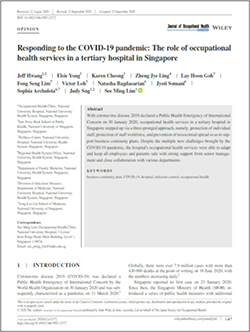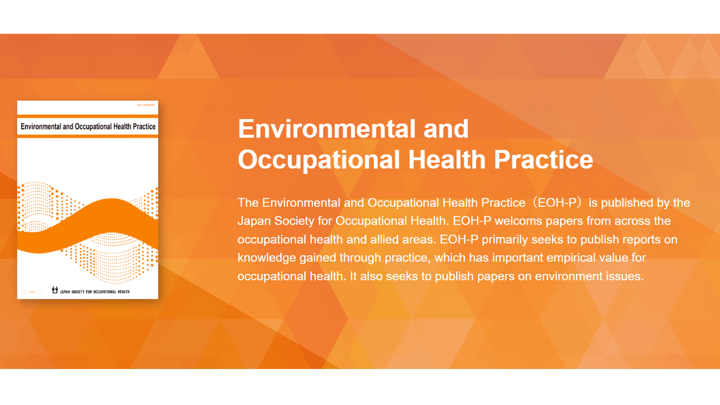#0092 Responding to the COVID‐19 pandemic: The role of occupational health services in a tertiary hospital in Singapore

Defense is the Best Offense—Protecting Healthcare Workers in a Pandemic
Singapore reported its first case of Coronavirus disease 2019 (COVID-19) on 23 January 2020, while WHO declared COVID-19 as a pandemic on 11 March 2020. Based on the Singapore Ministry of Health's public health guidelines issued on 7 February 2020, the institutional Occupational Health Clinic (OHC) of a tertiary hospital implemented a three-tiered approach to ensure a safe work environment. In this article, we discuss these steps adopted, which were (1) protection of individual staff, (2) protection of staff workforce, and (3) prevention of nosocomial spread, as well as the implementation of these steps over three months since 7 February 2020.
The OHC took the first step by hiring new staff, including temporary employees, to re-distribute the workload of existing staff. These 1,389 new employees hired over the three months underwent a review of pre-employment and routine vaccination history before being deemed fit for various jobs. All employees involved in high-risk COVID-19 care received N95 mask fittings daily to replace the used ones, while the rest received surgical masks.
The second step included surveillance of the staff’s travel history, exposure to COVID-19, or complaints of COVID-19 symptoms. The OHC quarantined any employee reporting travel to or from high-risk areas or possible exposure to COVID-19 for 14 days. The quarantined employee returned to work only if asymptomatic during these 14 days. Employees working in the hospital logged their temperature in an online portal monitored by the OHC. If employees reported fever or any other COVID-19 symptom, the OHC flagged them so that their leave of absence was reconciled with COVID-19 related sick leave.
In their third step, the OHC standardized protocol for reporting sick and assessing return-to-work status for the unwell staff. Any employee reporting sick due to COVID-19 received treatment at the emergency department in-person or at primary care clinics via teleconsultation. After recovering from COVID-19, the OHC reviewed if the employees were fit to resume their duties.
The OHC overcame certain challenges while implementing these measures by increasing the use of technology to assist in additional responsibilities; enhancing communication between leadership, infection disease specialists, and hospital staff; addressing non-COVID-19-related health issues or remote working concerns; and sharing disease surveillance data with various public health organizations to control future outbreaks.
Thus, the institution demonstrated a pro-active and collaborative public health precautionary approach to protect the health of its workforce under the “new normal” brought about by COVID-19.

Link to the original journal article:
https://onlinelibrary.wiley.com/doi/10.1002/1348-9585.12172
Title of the paper:
Responding to the COVID‐19 pandemic: The role of occupational health services in a tertiary hospital in Singapore
Authors:
Jeff Hwang, Elsie Yong, Karen Cheong, Zheng Jye Ling, Lay Hoon Goh, Fong Seng Lim, Victor Loh, Natasha Bagdasarian, Jyoti Somani, Sophia Archuleta, Judy Sng, See Ming Lim




